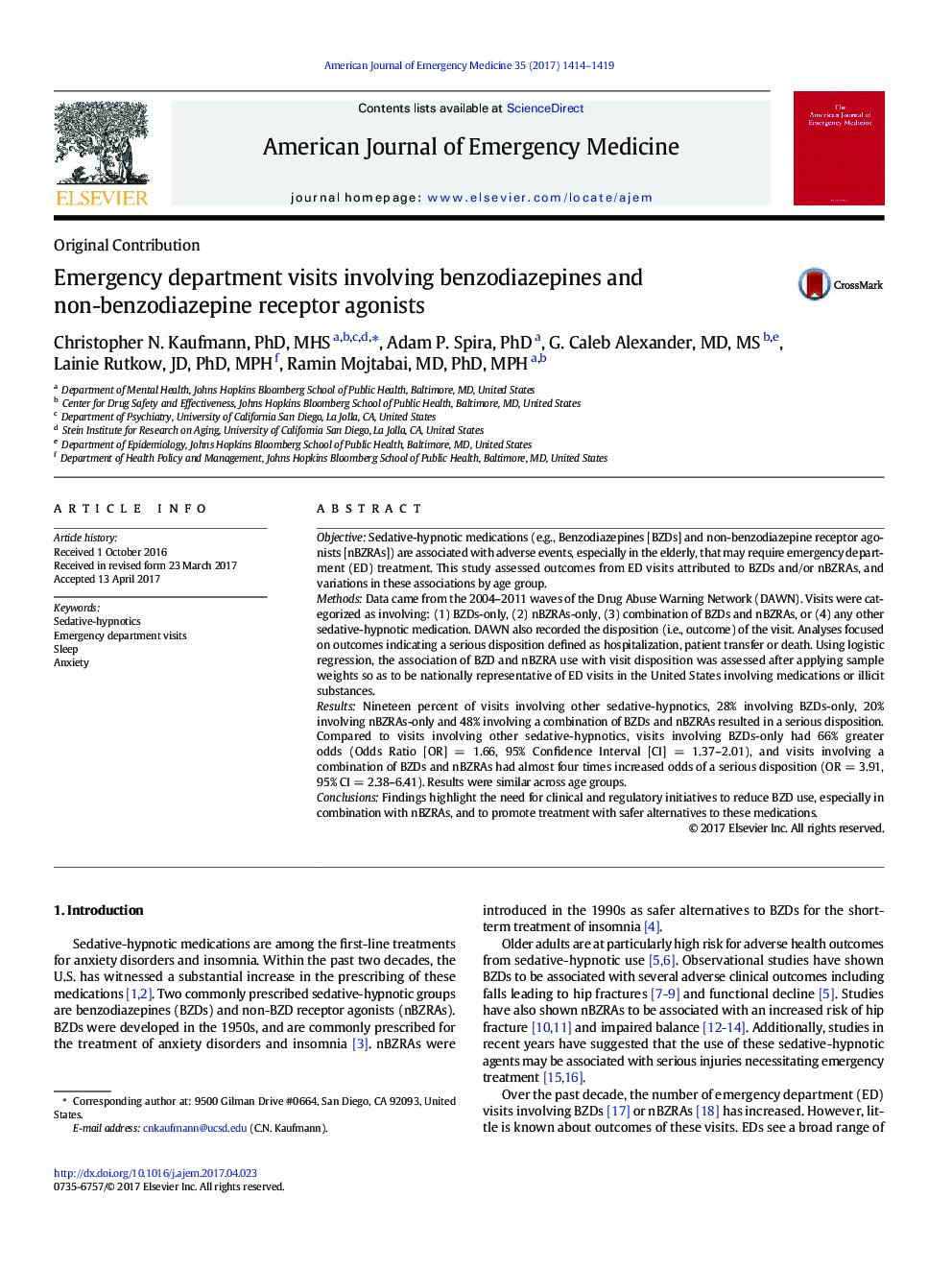| کد مقاله | کد نشریه | سال انتشار | مقاله انگلیسی | نسخه تمام متن |
|---|---|---|---|---|
| 5650421 | 1588076 | 2017 | 6 صفحه PDF | دانلود رایگان |
ObjectiveSedative-hypnotic medications (e.g., Benzodiazepines [BZDs] and non-benzodiazepine receptor agonists [nBZRAs]) are associated with adverse events, especially in the elderly, that may require emergency department (ED) treatment. This study assessed outcomes from ED visits attributed to BZDs and/or nBZRAs, and variations in these associations by age group.MethodsData came from the 2004-2011 waves of the Drug Abuse Warning Network (DAWN). Visits were categorized as involving: (1) BZDs-only, (2) nBZRAs-only, (3) combination of BZDs and nBZRAs, or (4) any other sedative-hypnotic medication. DAWN also recorded the disposition (i.e., outcome) of the visit. Analyses focused on outcomes indicating a serious disposition defined as hospitalization, patient transfer or death. Using logistic regression, the association of BZD and nBZRA use with visit disposition was assessed after applying sample weights so as to be nationally representative of ED visits in the United States involving medications or illicit substances.ResultsNineteen percent of visits involving other sedative-hypnotics, 28% involving BZDs-only, 20% involving nBZRAs-only and 48% involving a combination of BZDs and nBZRAs resulted in a serious disposition. Compared to visits involving other sedative-hypnotics, visits involving BZDs-only had 66% greater odds (Odds Ratio [OR]Â =Â 1.66, 95% Confidence Interval [CI]Â =Â 1.37-2.01), and visits involving a combination of BZDs and nBZRAs had almost four times increased odds of a serious disposition (ORÂ =Â 3.91, 95% CIÂ =Â 2.38-6.41). Results were similar across age groups.ConclusionsFindings highlight the need for clinical and regulatory initiatives to reduce BZD use, especially in combination with nBZRAs, and to promote treatment with safer alternatives to these medications.
Journal: The American Journal of Emergency Medicine - Volume 35, Issue 10, October 2017, Pages 1414-1419
